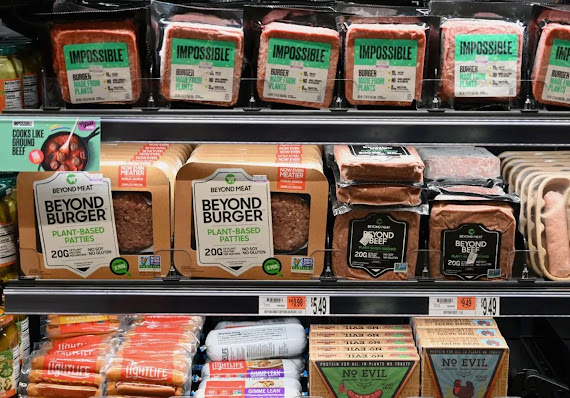Animal Agriculture, Plant Based Alternatives and Global Warming
Methane gas is a significant greenhouse gas, roughly 80 times more potent than carbon dioxide. Agriculture and in particular animal agriculture is a large source of this greenhouse gas. The key sources of methane in animal agriculture are the belching of methane from ruminant animals and the decomposition of their waste. Digestion alone produces 30 to 50 quarts of carbon dioxide and methane gas, per hour, per animal!
The UN Food and Agriculture Organization (FAO) estimates about 14.5 % of GHG’s or 7.1 gigatons of CO2 equivalent, can be attributed to the livestock sector annually. This is broadly equivalent to the emissions from all the fuel burned by all the world's transport vehicles, including cars, trucks, trains, boats and airplanes!
The percentage of greenhouse gas from animal agriculture on a commodity-basis is as follows:
Beef 41 percent
Cattle milk 20 percent
Pig meat 9 percent
Buffalo milk and meat 8 percent
Chicken meat and eggs 8 percent
Small ruminant milk and meat 6 percent
Any one of us can have a direct impact on reducing the amount of methane from animal agriculture. All one needs to do is change their diet. Any reduction in the amount of animal food in your diet will have a direct effect on the animal agriculture business. Raising fewer animals reduces all the industry’s sources of methane as well as the need for more forest clearing.
Since the time of our original article on animal agriculture it has become a bit easier to reduce our consumption of animal food. Plant based substitutes for meat have reached the market and are competitively priced with meat products as a protein source.
References:
https://www.epa.gov/ghgemissions/overview-greenhouse-gases
http://www.fao.org/news/story/en/item/197623/icode/
http://www.openthefuture.com/cheeseburger_CF.html
http://blogs.edf.org/climate411/2008/02/26/ghg_lifetimes/
Some proponents of continuing to eat beef at the rate that we do now say that there is a greener, less greenhouse gas producing way of raising cattle. It is referred to as grass-fed. The science does not support this assertion. Read more about this question on our blog here:




Comments
Post a Comment